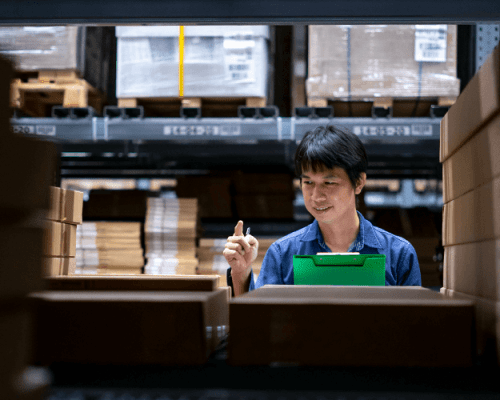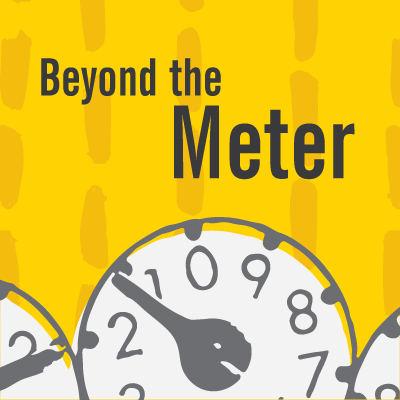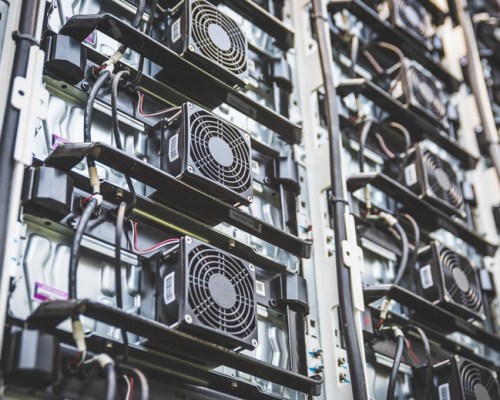The Changing Landscape of Energy in Retail and Distribution
Last year (2021) was a record year with extremes and changes for the retail and distribution sector. We’re all adapting to the new ways we do business. As a key segment manager, I spend time at industry conferences hearing from and talking to professionals across the U.S. about retail and distribution trends. Here I’m going to talk about the current state of the industry, and developments in technology and energy use. I’ll also talk about ways to transition your operations for more resiliency and efficiency. Keep reading to help your business identify opportunities and gain a competitive advantage for years to come.
The current state of retail and distribution
According to Climate.gov, 2021 was another year of costly extreme weather. The year graced us with 20 extreme weather events for a total of $145 billion in weather damage costs. The National Law Review recently published that, “A combination of factors during the last year, including the COVID-19 pandemic, natural disasters and extreme weather such as the ice storms in Texas, droughts in Asia and wildfires in California, has affected suppliers’ and transporters’ ability to keep up with demand, resulting in significant supply chain disruptions that have affected countless industries.” And these weren’t the only challenges. The bottleneck at the Port of Los Angeles, a scarcity of truck drivers, and train robberies all added to supply chain disruptions. Seriously, who would have predicted train robberies?
As 2022 gets underway, retailers, wholesalers and distributors continue to face supply chain shortages and critical worker scarcity. The good news – there are also opportunities. Online ordering continues at pandemic levels and technology advances have the opportunity to make up for staffing deficits.
Changes in when and how energy is used
With such large customer shifts to e-commerce, technology is critical to success. Without consistent, uninterrupted power, operations can grind to a halt – which can impact sales and deliveries to customers. According to sources at the recent National Association of Wholesalers Executive Summit I attended, pre-pandemic, one out of every 67 jobs was remote. Now one out of every seven jobs is remote. The accelerated demand for e-commerce has driven growth and expansion of order fulfillment centers (OFCs) and resiliency is more important than ever to support them.
The 24-hour grocers continue to operate under reduced COVID-19 hours. But many stores and distribution centers are now moving a major percentage of their product through alternative methods – via online, store pickup and other order fill sites. Peak energy use hours aren’t the same as store open hours anymore. Orders are being filled in store for store pickup while online delivery orders are filled in new AI OFCs (artificially intelligent order fulfillment centers) at all hours of the day.
Turning to automation to offset labor shortages
At the National Association of Wholesalers Executive Summit, industry leaders were concerned about technology modernization, operational efficiency, cybersecurity, and supply chain disruption. But the most common subject of conversations was the lack of labor.
Given the difficulty in hiring enough workers, the retailers and distributors are turning to automation. Many order fulfillment centers (OFCs) were already planning to develop these automation solutions as far back as 2016. The pandemic has spurred OFCs to deploy their plans much faster. Many of these solutions are being constructed in house – cutting ramp-up time to build sites that can handle the heavy flow of in-store and digital business.
Gautham Vadakkepatt, director of the Center for Retail Transformation at George Mason University, predicts that retailers will accelerate their adoption of automation technology to manage tasks not only in the backroom and warehouses but in customer-facing areas of stores as well. Self-checkout kiosks and aisle-scanning robots are poised to enter retail floors. Down the road, it could lead to the integration of equipment that picks center store items robotically while customers shop for items like produce, meat and seafood, Vadakkepatt said.
The increase in automatic retrieval systems (ARS), robotic process automation (RPA), or around-the-clock distribution centers, means energy systems and usage demands are also changing rapidly. Electrical uptime is needed to keep inbound and outbound flows efficient and safe for workers. With the dependence on high tech systems, what can you do about extreme weather outages and other causes of unplanned downtime? It’s simple – harden your facility with resiliency.
What is energy resiliency and why is it important?
In this context, resiliency is having reliable energy infrastructure, plus backup generation and support equipment for your site. These assets are designed to deliver dependable electricity – free of surges and blips. As a digital base of operations, your sites with sophisticated order-handling equipment require resilient energy systems and instantaneous power support nearing that of data center or hospital requirements.
It’s not just about sales. Yes, uptime and sales are important. But there’s more at stake – brand reputation, customer loyalty, and the high priorities of worker safety and retention. Communities depend on companies. In a recent webcast, Craig D’Arcy, Director of Energy Management with The Home Depot, related “When you have storms like we have had recently and think about the things that people need both before, as the storm is rolling in, and afterwards as the storm has rolled out, we are a critical resource for the community. Organizations often stage recovery efforts in the parking lot of a Home Depot. Resiliency and being able to keep our stores and non-store facilities open is just super, super important for us.”
When customers can’t get products, they stop coming to those stores. Longterm out of stocks can put a dent in the brand reputation and customer loyalty that took so much work to create. And before you say, “well, we’re just distributors – that’s a retail problem,” remember that lack of customer loyalty can mean lower sales, and without thriving retailers there isn’t a demand for distribution of products.
During worker shortages, worker retention is paramount. Unplanned outages at DCs can leave hundreds of workers stranded in the dark on the warehouse floor. Outages at retailers also mean no sales and cut hours. It’s important that workers can feel safe and depend on their hours in these complicated times.
Reliable operations can help create a competitive advantage
Since resiliency touches so many parts of your business, having it can give you an edge over your competition. That’s why you need a customized energy infrastructure plan and assets. With more resilient energy equipment, you can help provide a better customer experience and more seamless operations. Predictable and accurate fulfillment typically equals happy customers and positive reviews.
Resiliency and sustainability can work together – think upgraded generators and more efficient lighting and equipment. You can also take the next step to electrify your fleet and other equipment that currently use less clean power sources. Having net-zero emissions goals is a way companies across industries are working to attract the next generation of investors. More and more corporations are putting pressure on their suppliers to lower emissions. So, lowering yours can give you a competitive edge. One technology that sits in the intersection between resiliency and sustainability is battery energy storage.
The value of storage
Battery energy storage can be charged by the grid or by renewable energy sources. Then, when you need it, you can run your facilities off the batteries. They’re a win-win when it comes to sustainability. They have no direct emissions, are energy efficient and can even help your organization advance its sustainability goals – and provide environmental, social and governance (ESG) investment value.
Battery storage is largely low maintenance and doesn’t require much effort or expertise from your organization. They can help boost your company’s flexibility. Analytics and monitoring can be customized to meet your needs. If you’re in a region that experiences all four seasons, don’t worry, battery energy storage has multiple dispatch modes that can help meet your cooling and heating needs throughout the day. And they take up a relatively small footprint, allowing them to fit in urban environments as well as in large, sprawling spaces.
They can also help give your organization price predictability. By storing low-cost energy and delivering it during peak periods of higher electricity rates, you have more control. You can save on your overall energy costs by avoiding peak usage penalties in certain electricity markets. Learn more on our recent blog about battery energy storage. Your options for renewables and cleaner energy alternatives have never been so diverse. There are on-site projects, power purchase agreements, virtual power purchase agreements and more. Companies like yours are finding it easier and more affordable to achieve sustainability goals even as you work to build resiliency.
We know choosing energy system upgrades can be complicated. My team and I are here to help you choose solutions that fit your needs in this changing landscape. See how we helped Kroger with a 1.174-MW DC rooftop solar array that cuts 1,420 metric tons of emissions, equivalent to powering 240 homes annually. And see how we worked with Ikea by installing rooftop solar on their locations totaling 20.01-MW DC, with an annual production of 28,896.38-MWh DC. To take the next step toward resiliency and renewables, reach out.



